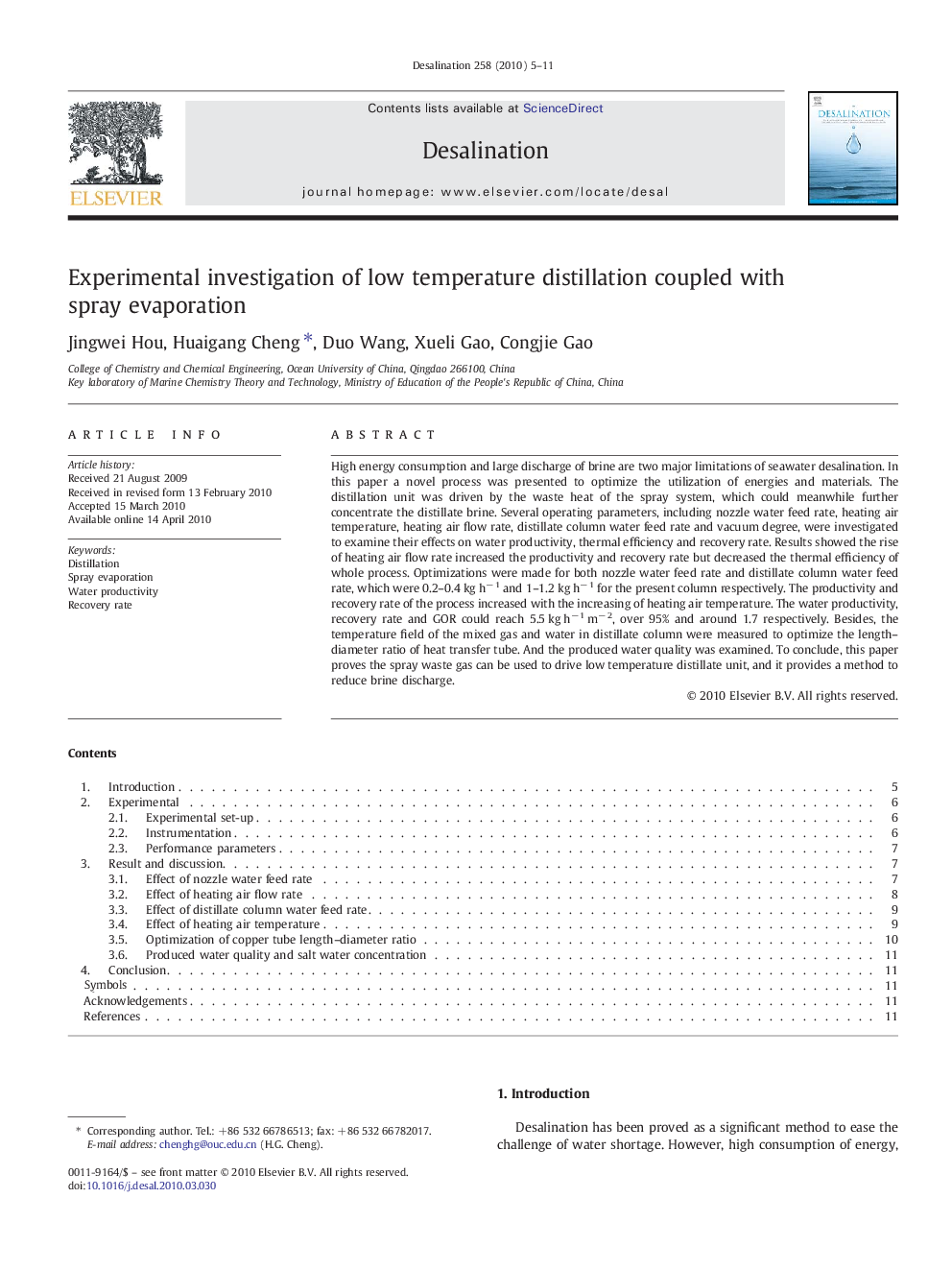| Article ID | Journal | Published Year | Pages | File Type |
|---|---|---|---|---|
| 625747 | Desalination | 2010 | 7 Pages |
High energy consumption and large discharge of brine are two major limitations of seawater desalination. In this paper a novel process was presented to optimize the utilization of energies and materials. The distillation unit was driven by the waste heat of the spray system, which could meanwhile further concentrate the distillate brine. Several operating parameters, including nozzle water feed rate, heating air temperature, heating air flow rate, distillate column water feed rate and vacuum degree, were investigated to examine their effects on water productivity, thermal efficiency and recovery rate. Results showed the rise of heating air flow rate increased the productivity and recovery rate but decreased the thermal efficiency of whole process. Optimizations were made for both nozzle water feed rate and distillate column water feed rate, which were 0.2–0.4 kg h− 1 and 1–1.2 kg h− 1 for the present column respectively. The productivity and recovery rate of the process increased with the increasing of heating air temperature. The water productivity, recovery rate and GOR could reach 5.5 kg h− 1 m− 2, over 95% and around 1.7 respectively. Besides, the temperature field of the mixed gas and water in distillate column were measured to optimize the length–diameter ratio of heat transfer tube. And the produced water quality was examined. To conclude, this paper proves the spray waste gas can be used to drive low temperature distillate unit, and it provides a method to reduce brine discharge.
